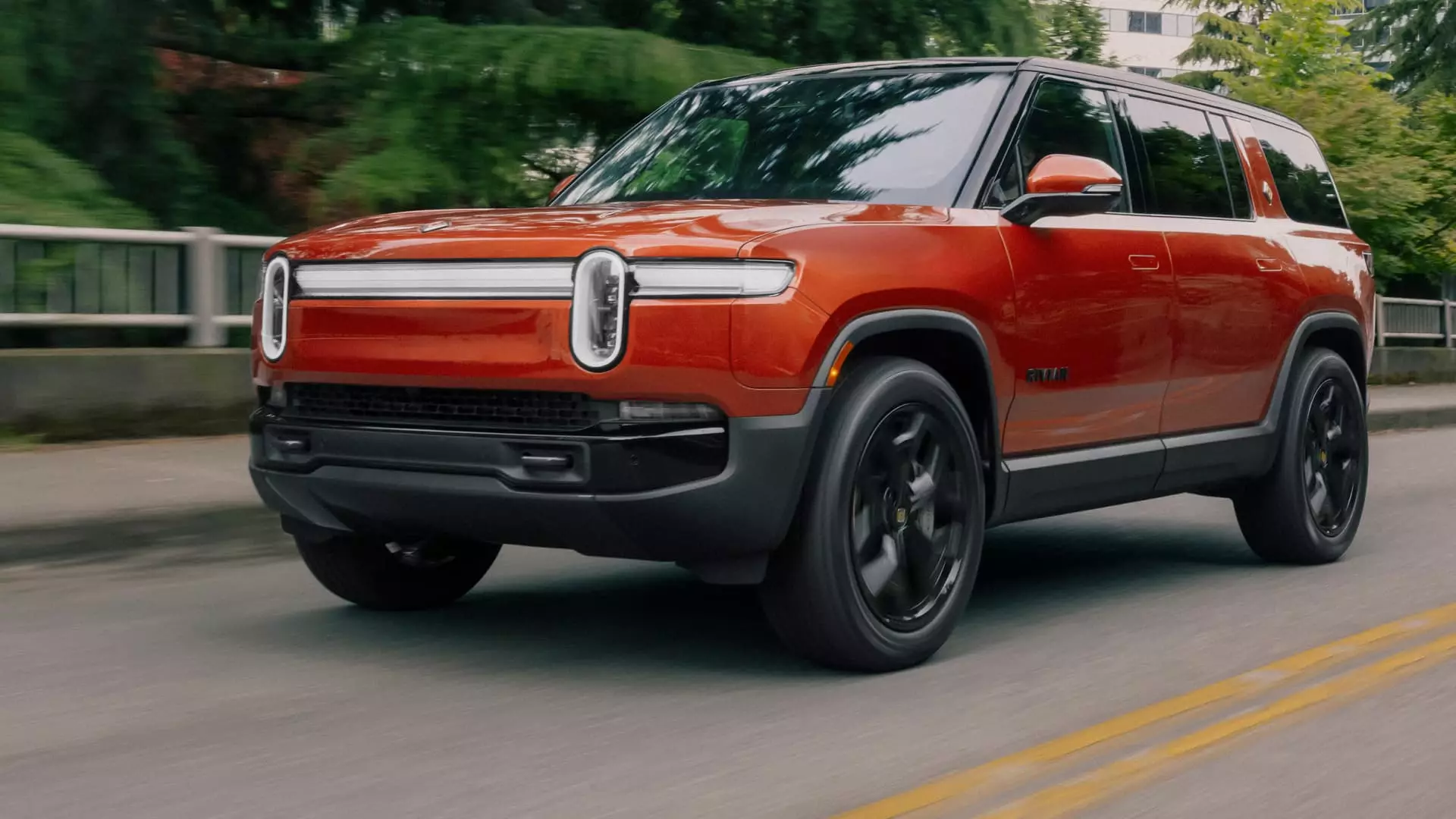Rivian Automotive has recently attracted significant attention in the automotive and financial sectors with its fourth-quarter earnings report, revealing a blend of surprising accomplishments and ominous forecasts. The electric vehicle (EV) manufacturer managed to exceed Wall Street’s projections, marking its inaugural gross quarterly profit of $170 million. While this milestone is a notable achievement for an automaker navigating the competitive EV landscape, concerns loom over the company’s anticipated sales decline in 2025.
In reviewing Rivian’s recent financial performance, the company reported a narrowed adjusted loss expectation for 2025, projecting a range between $1.7 billion and $1.9 billion, a significant decrease from the previous $2.69 billion loss recorded in 2024. The announcement of expected vehicle deliveries falling between 46,000 to 51,000 units in 2025, slightly under last year’s delivery of 51,579 vehicles, signals a cautious approach by the management. This tempered outlook suggests that while Rivian is on a positive trajectory towards profitability, the path is fraught with challenges, not least of which are external environmental factors such as policy changes and market demand volatility.
Initially responding positively to the quarterly earnings news, Rivian’s shares increased about 7% during after-hours trading, indicating investor optimism. However, as the trading day progressed, the stock closed down by 2.3% at $13.61 per share, reflecting investor wariness regarding the sustainable growth potential of the company. This volatility underscores the tension between Rivian’s operational advancements and the looming uncertainties surrounding the automotive sector, particularly in relation to federal EV incentives and potential tariff implications.
Rivian’s CEO RJ Scaringe addressed the uncertainty prevailing in the industry during a recent earnings call, acknowledging how external factors could adversely impact the company’s strategic plans for 2025. The anticipated changes to government incentives for EV buyers, along with ongoing tariff discussions, cast a shadow over the company’s projections. Rivian’s statement in its shareholder letter reflected awareness of these external risks, portraying a commitment to navigating the complexities of regulations while remaining focused on long-term electrification goals.
Looking toward the future, Rivian has slated its capital expenditures for the fiscal year between $1.6 billion and $1.7 billion, up from $1.41 billion in 2024. This increase is largely driven by the preparation for the launch of its much-anticipated “R2” midsize vehicle rollout in 2026. Rivian plans to halt operations at its single auto plant located in Normal, Illinois, for the latter half of the year to retool for the introduction of these new vehicles. CFO Claire McDonough has expressed confidence in the R2, stating it will be “truly transformative” for the company’s potential growth and profitability, though the inherent risks of retooling operations during an uncertain market cannot be ignored.
Rivian’s quarterly report revealed that a portion of its gross profits—approximately $299 million—stemmed from the sale of regulatory credits to other automakers, a strategy which helps companies meet emissions standards. This revenue stream becomes particularly precarious given that potential changes in government administration could materially affect future sales of these credits. Additionally, Rivian’s software and services segment, generating $214 million, signals a path toward diversifying income sources, a strategy that could mitigate risks stemming from reliance on vehicle sales alone.
Overall, Rivian Automotive’s fourth-quarter earnings reveal a company that is cautiously optimistic yet grappling with significant market challenges. The dichotomy of achieving its first quarterly gross profit while facing forecasts of declining sales encapsulates the complexities of operating in an evolving automotive market. As Rivian navigates these turbulent waters, its ability to adapt to external pressures, enhance product offerings, and diversify revenue streams will be critical in determining its future success in the competitive electric vehicle sector.


Leave a Reply